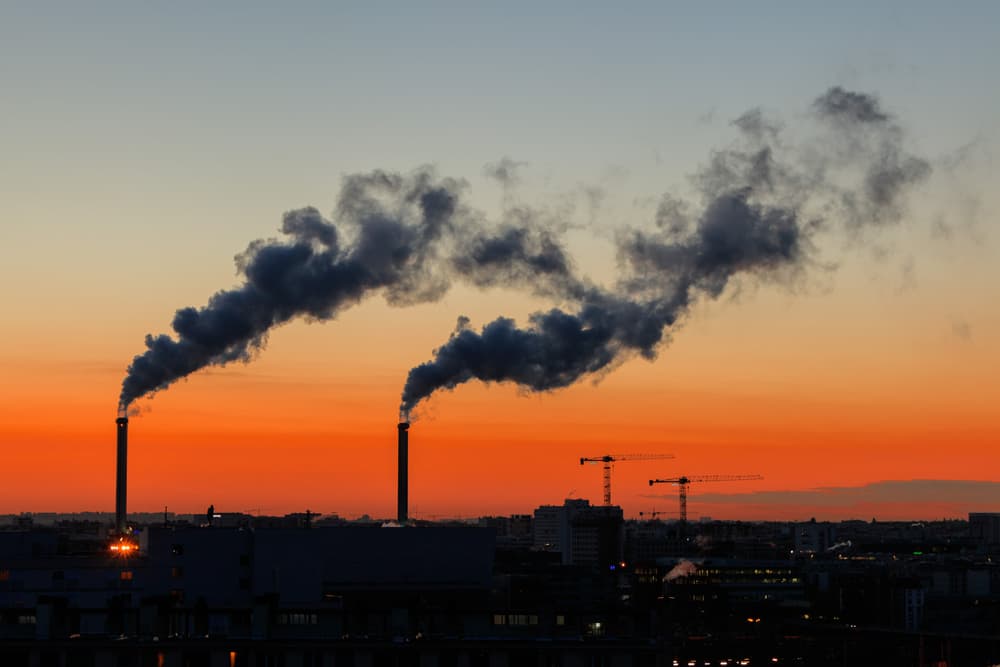Important distinctions exist between carbon monoxide (CO) and carbon dioxide (CO2); however, the gasses are frequently misinterpreted. Despite their similar sounding names, these gasses have distinct origins, chemical features, and risks.
The media is a major contributor to the CO and CO2 confusion. They have written many pieces regarding CO risks caused by CO2 leakage. There are different stories about the hazards of CO2 and global climate change. Online searches for “CO2 detector” return results for “CO detectors.”
This misconception makes people believe that both gasses are equally hazardous, although this is not the case. So, let us explore these gasses in depth.
What is Carbon Dioxide & Where Does it Come From?
Carbon Dioxide (CO2) is a chemical molecule composed of one carbon atom and two oxygen atoms. It is odorless and colorless at room temperature and is present in low concentrations in the Earth’s atmosphere. CO2 released in the atmosphere comes from respiration, breakdown of organic matter, combustion of fossil fuels, and fermentation.
What is Carbon Monoxide & Where Does it Come From?
Carbon Monoxide (CO) is an odorless, colorless, and tasteless gas consisting of one carbon and one oxygen atom. Unlike CO2, it is synthetic and does not occur naturally in the environment. Instead, it is formed by the incomplete combustion of organic waste, which can result from using carbon-based fuels in automobiles, heaters, and culinary appliances.
CO is consequently spatially variable and transient in the atmosphere, where it plays a role in forming ground-level ozone.
Health Risks Related to Carbon Monoxide and Carbon Dioxide
Carbon monoxide is hazardous because it binds to hemoglobin, decreasing the blood’s capacity to transport oxygen, which hinders the delivery of oxygen to the organs.
Due to insufficient oxygen delivery to the brain, CO exposure’s most typical side effects are fatigue, headaches, confusion, and vertigo. Unborn infants whose mothers are exposed to high levels of CO during pregnancy are at risk for developmental problems.
Low concentrations of CO2 are not harmful to inhale. Higher concentrations can impair respiratory function and cause central nervous system excitation followed by depression. A high concentration can displace the air’s oxygen. If there is less oxygen available for inhalation, symptoms such as rapid breathing, rapid heart rate, clumsiness, emotional upsets, and fatigue can occur.
As available oxygen decreases, nausea, vomiting, collapse, convulsions, coma, and death are possible consequences an individual might suffer. With physical exertion, symptoms manifest more rapidly. In addition, lack of oxygen can cause irreparable harm to organs such as the brain and heart.
Multi-Industry Uses for Carbon Dioxide (CO2)
- Food and Beverages industries
Liquid or solid carbon dioxide is utilized for rapid freezing, surface freezing, chilling, and refrigeration in food transportation. In cryogenic tunnels and spiral freezers, high-pressure liquid CO2 is injected through nozzles. It is then converted into a mixture of CO2 gas and dry ice “snow” that covers the food product’s surface. Refrigeration is transferred to the product as the ice sublimates.
Carbon dioxide in the gaseous form is used in carbonated soft drinks. It is easily noticeable when you open most sodas.
Carbon dioxide liquid is an effective solvent for numerous organic compounds. For example, they are used for decaffeinating coffee.
CO2 is also utilized as an inert “blanket,” a fuel for product dispensing, and an extraction agent. It is also used to displace air during the canning process.
Producers of flavors and fragrances use supercritical CO2 extraction and fractional separation to separate and purify volatile flavor and fragrance concentrate.
- Manufacturing and Construction
In large quantities, carbon dioxide is used as a shielding gas in MIG/MAG welding, which protects the weld pool from oxidation by the surrounding air. Today, a mixture of argon and carbon dioxide increases the welding rate and reduces the need for post-weld treatment. In addition, casting molds are manufactured with carbon dioxide to increase their hardness.
- Chemicals, pharmaceuticals, and petroleum industry
Large quantities of CO2 are used in the chemical process industry as raw materials, particularly for producing methanol and urea.
Work With the Best CO2 Supplier Today
When looking for a carbon dioxide supplier, it is essential to ensure you get it from a trustworthy company. VS Carbonics is the leading provider of CO2 gas in Plant City and Miami, Florida. Our CO2 refills range from 5-pound cylinders to bulk CO2 for large-scale use. In addition, we offer liquid and dry ice CO2 cylinders. Contact us for CO2 service.
Image Source: GUNMANPHOTO / Shutterstock






